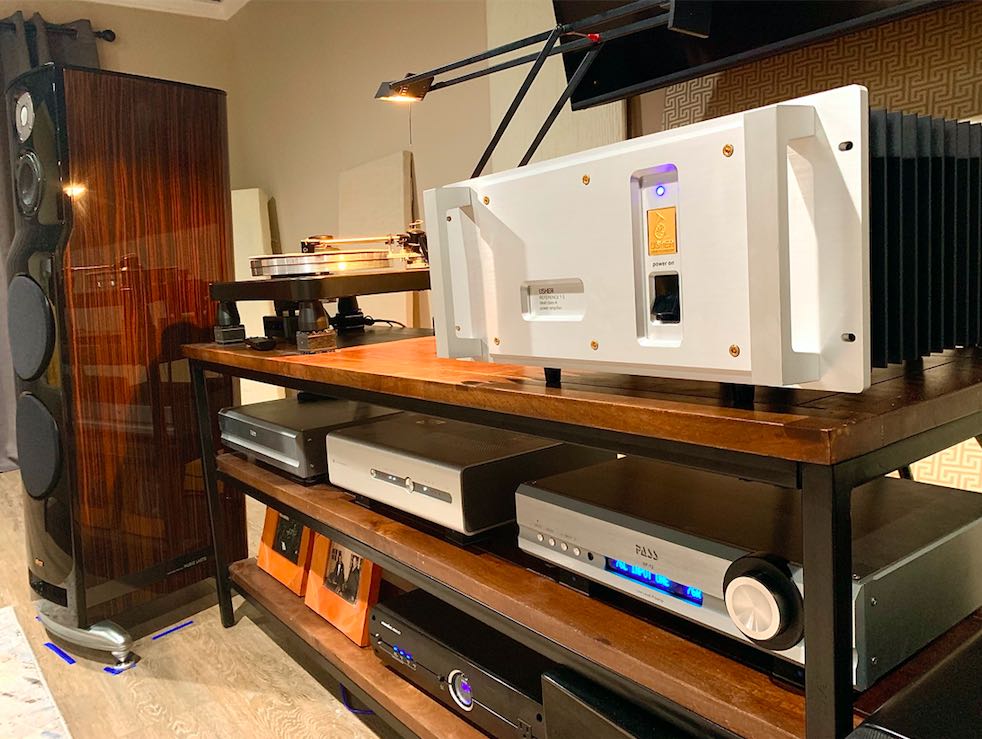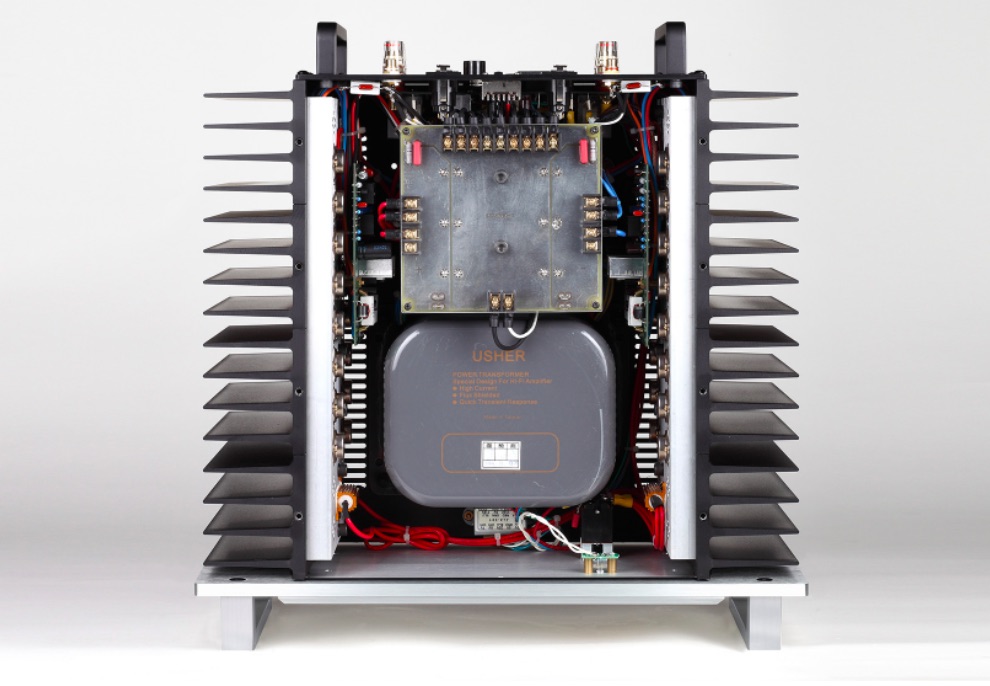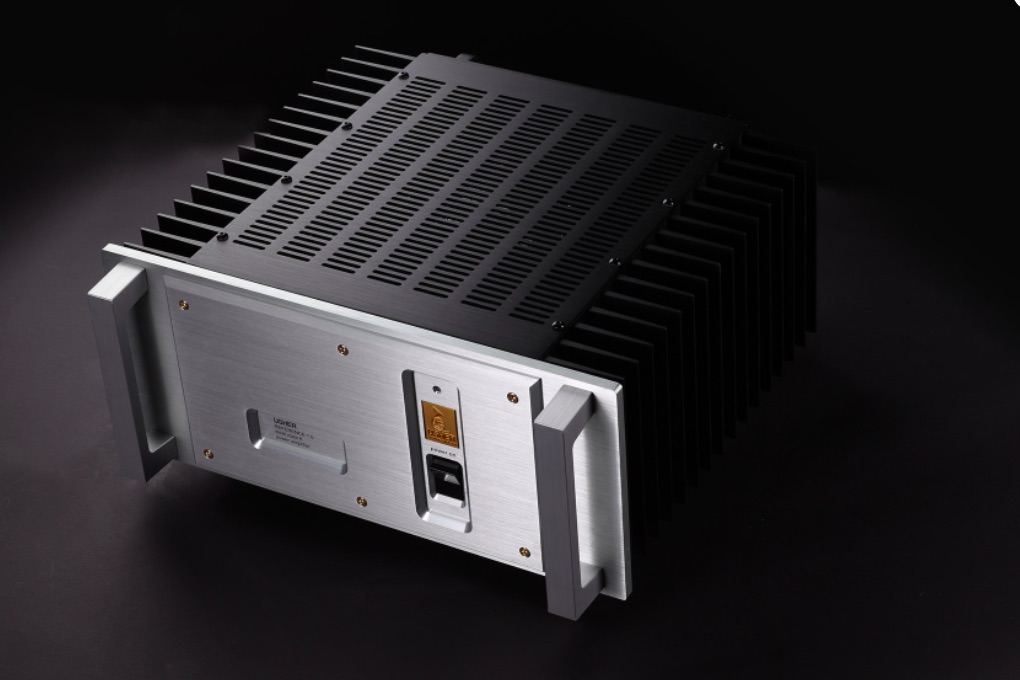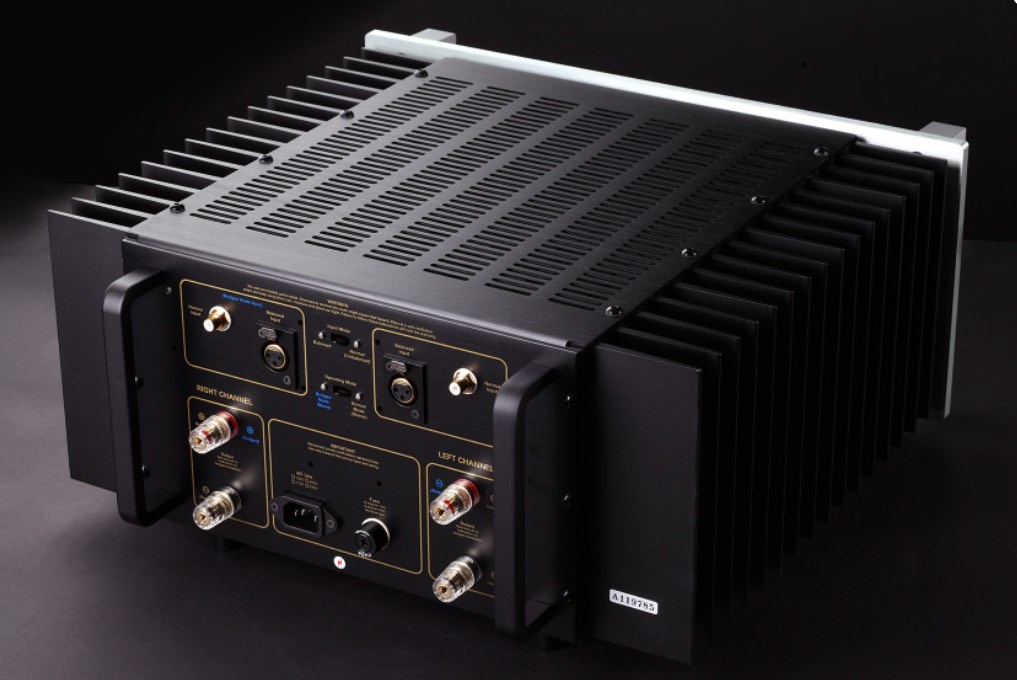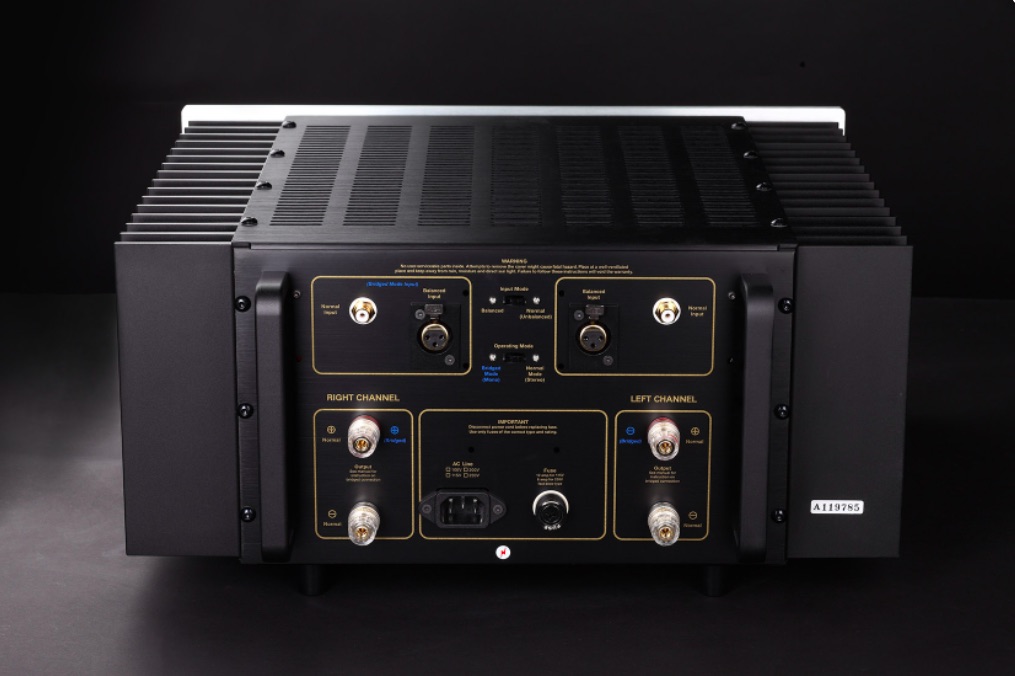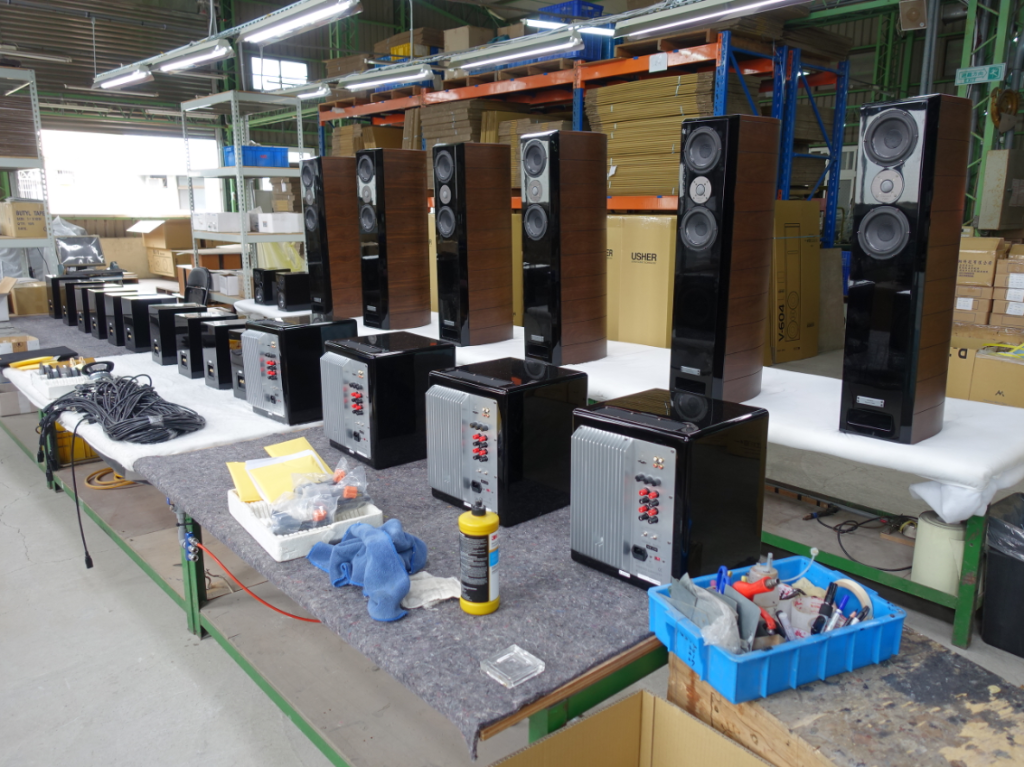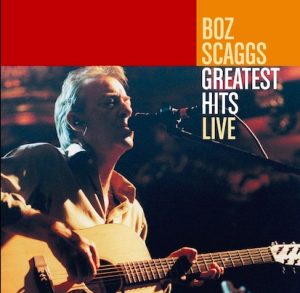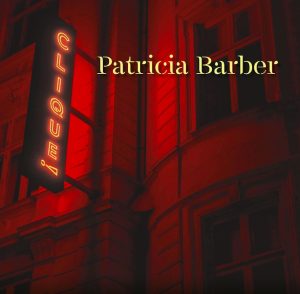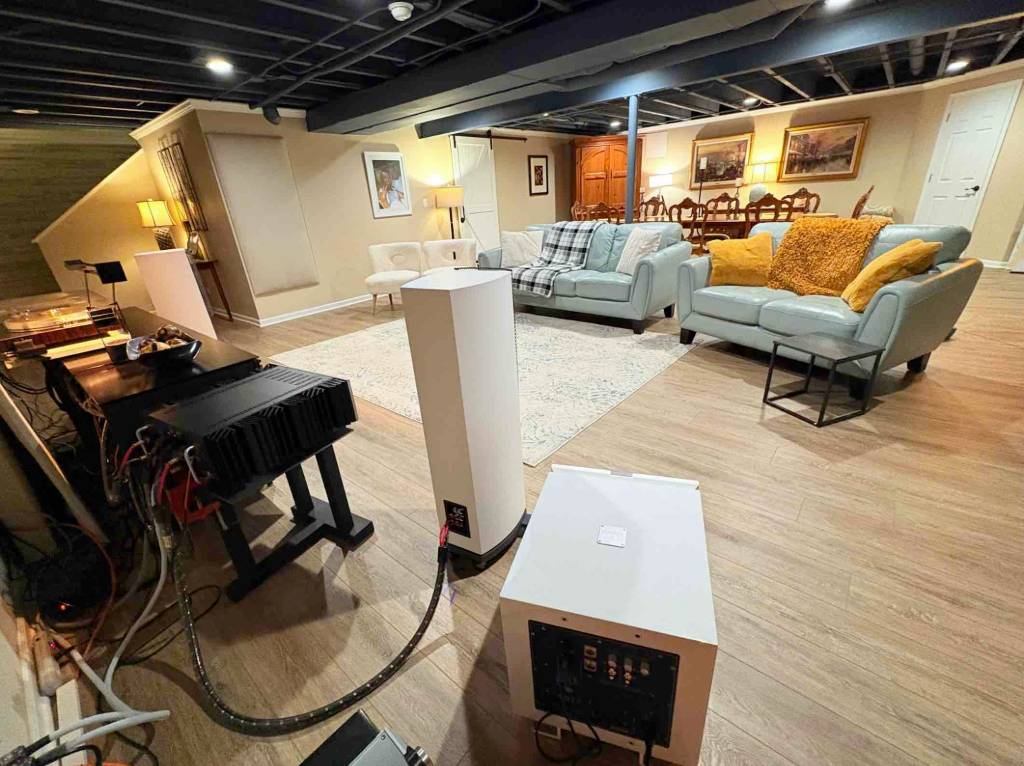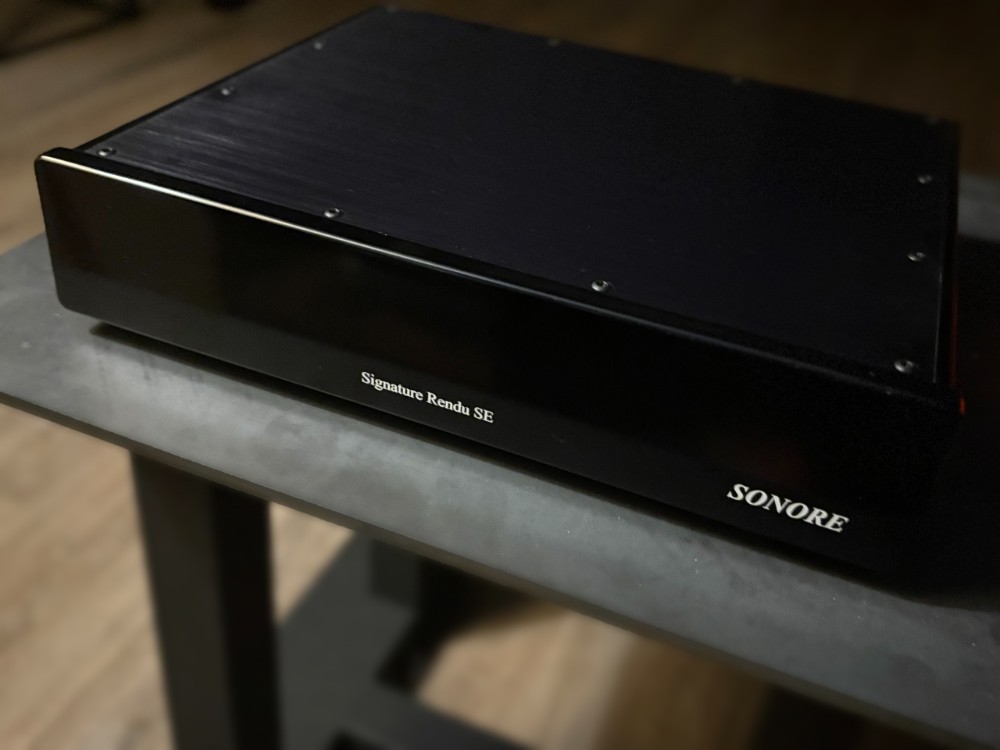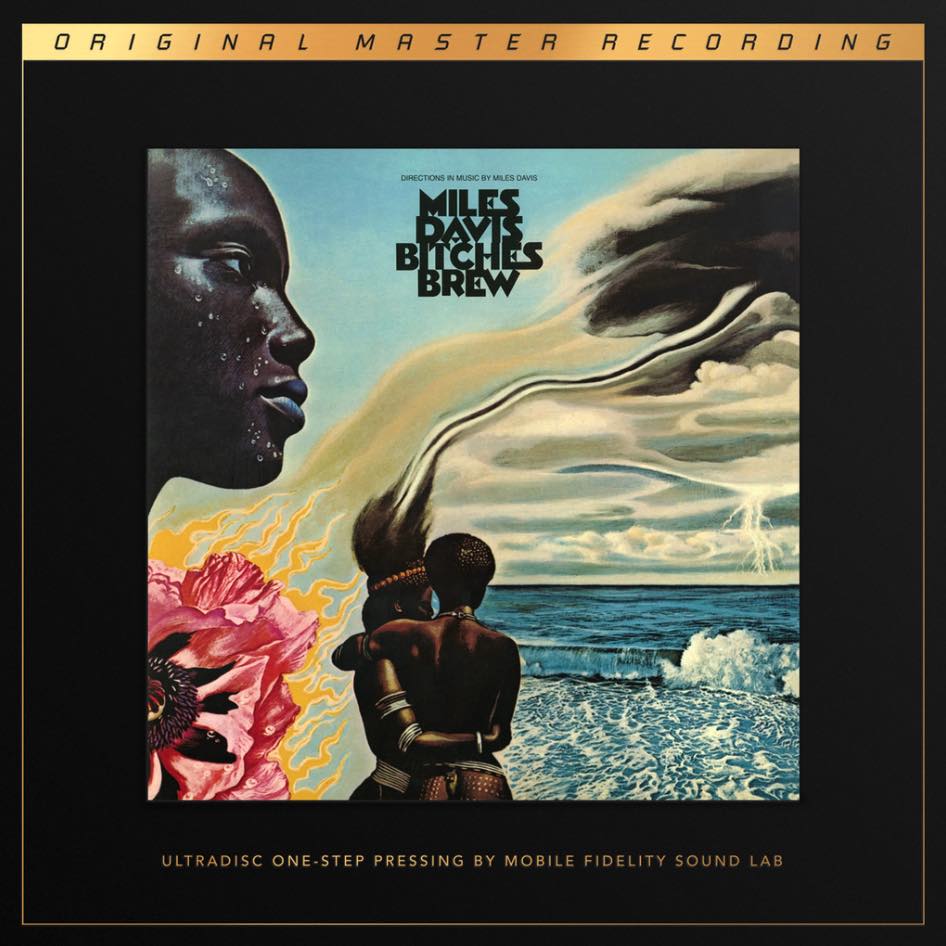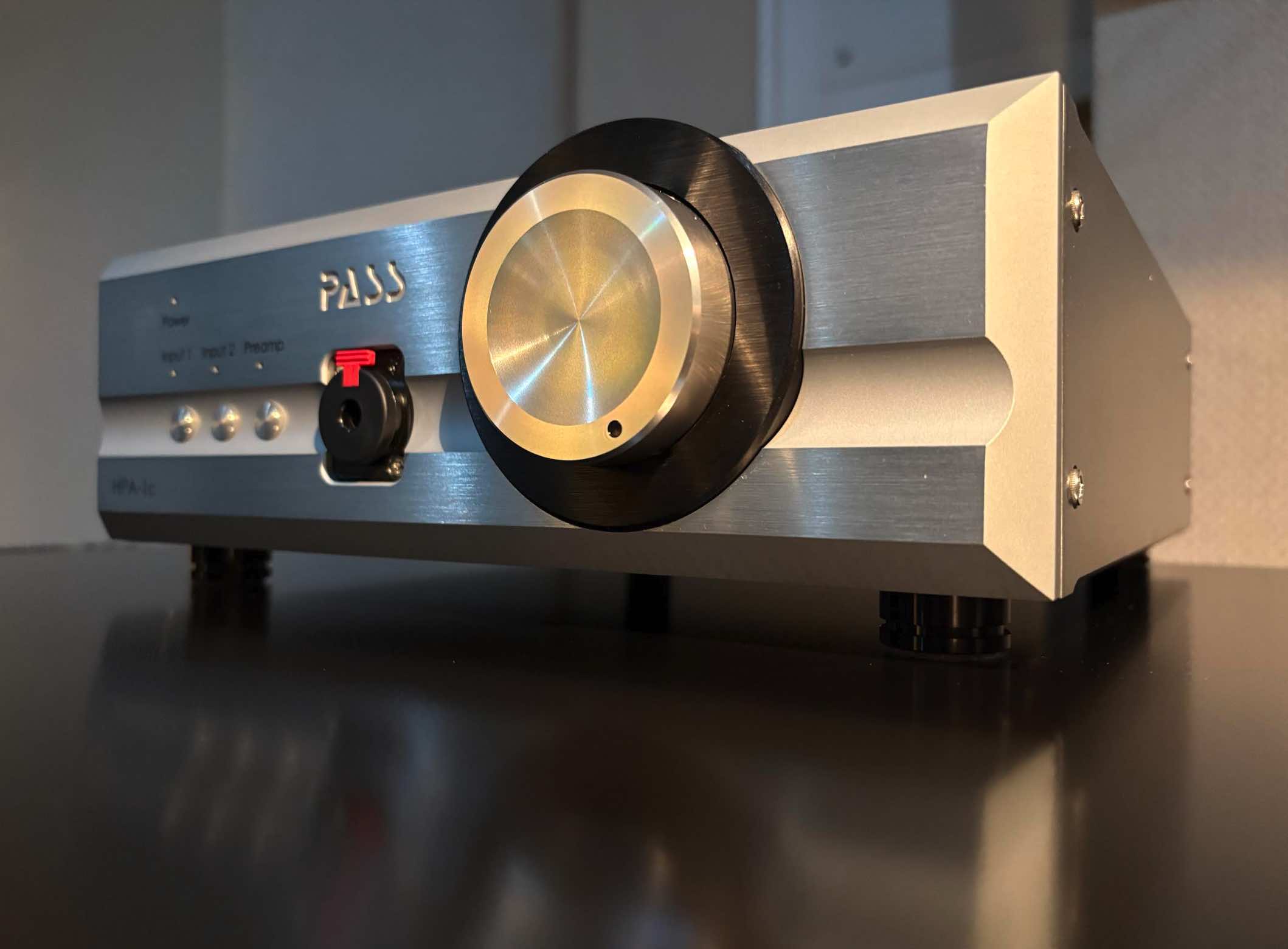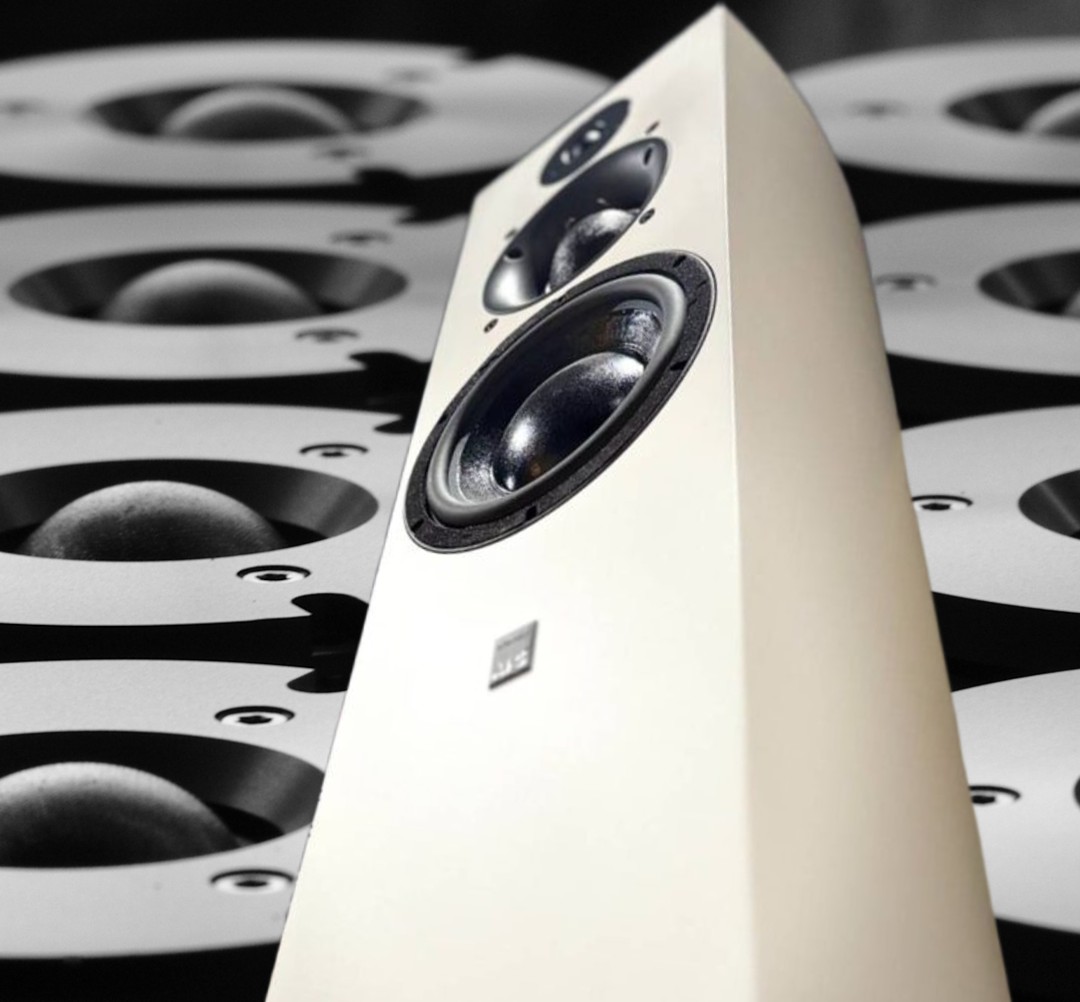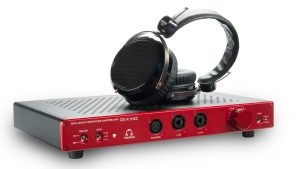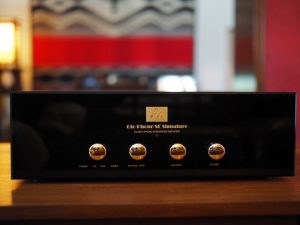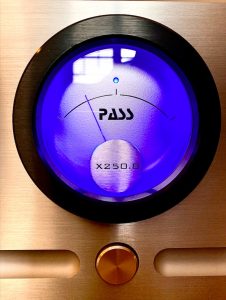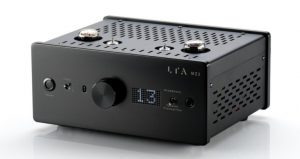The Usher R-1.5 stereo amplifier is built like a tank. Its utilitarian industrial design bears a striking resemblance to the Threshold 300 Stasis designed by audio guru Nelson Pass, which should come as no surprise.
In 1972 Usher Audio's owner and head engineer Lien-Shui Tsai built the first Usher R-1.5 amplifier as a copy of the e300 Stasis amplifier whose patent expired and its designer, the venerated Nelson Pass, had welcomed others to use it. It began as a fun project, however it soon became a hit with customers and eventually many audio enthusiasts throughout Taiwan became proud owners of this phenomenal amplifier.
"Over the decades much has changed, especially the power supply because parts were not available then that are available now, especially at the quality level," Fred Kat, importer forUsher Audio U.S. says.
Usher has incorporated some updates, particularly in the input stage and biasing to produce the R-1.5 amplifier ("Usher R-1.5 Amplifiers," Audioreview.com).
"The output stage is the same as some of the Threshold," Nelson Pass wrote in a Do-It-Yourself audiophile forum, "but they look to have stuck an additional gain stage in the middle." (www.diyaudio.com)
A Class A design, the R-1.5 employs massive heat sinks to cool the amp. As you may know Class A amplifiers are generally considered the best amplifier design class primarily due to their superb linearity and high gain versus low signal distortion levels when correctly designed. However, they are seldom used in high power amplifier applications due to high thermal power supply concerns (HERE). Interestingly, the R-1.5 amp gets warm, but not overly hot to one's touch as one would expect, suggesting that it does not operate entirely in Class A. (Note: my reference amplifier, the Pass Labs X150.8, is a Class A/B design with large heat fins and a similar heat signature). I heard it surmised that in the balmy climate of Taiwan, a fully biased high powered Class A amplifier would act like a space heater and would be highly undesirable. Who's to say?
Regardless, the Usher R-1.5 employs "Super Cascade" output stage topology using high powered bipolar metal encased power transistors designed by Motorola. It also utilizes a large low impedance high capacity EI power transformer (a core of laminated steel in E-I configuration inside bobbin windings) with a high capacitive filtering system and military grade metal resistors. (Lee, Gary. "Usher Audio 1.5 solid-state Stereo Amplifier." The Sensible Sound. No. 108, April/May 2006. and "Introduction to Transformers and Standard E-I Construction." February 4, 2021. Talema.com). It enlists "ultra-low odd order distortions" to minimize listening fatigue (Lee, Gary). It also includes a Burrow-Brown OPA2134P Sound Plus Series op amp, a bridging switch to allow for monoblock operation, high quality terminals that accommodate banana plugs or spades, and large handles on the front and rear panels of its chassis.
Build
A behemoth of aluminum and steel, the R-1.5 has a no-nonsense machined aluminum faceplate with six brass colored screws on the periphery, two massive handles on either side, with a recessed ON/OFF indicator light, a copper colored Usher insignia below, and a very stiff ON/Off switch below, and a recessed name badge in between.
Massive heat sinks adorn the sides, and rows of vents line the top. At the rear are two more large handles, RCA (unbalanced) and XLR (balanced) inputs, a sliding selector switch for Balanced or Normal (Unbalanced), a sliding selector switch labeled "Operating Mode" to select Bridged Mode (Mono) or Normal Mode (Stereo), right and left speaker cord outlets, an IEC connector inlet, and an amp fuse port. Underneath, four sturdy legs provide ample support.
Specifications
- 8 Ohm: 150 Watts/channel
- 4 Ohm: 260 Watts/channel
- Damping Factor: > 175 (single ended)
- Circumgyration: 40 V/ uS
- Power Supply (4 Ohm): 16A
- Transient Power Supply: >75A
- S/N Ratio: 100 dB
- Frequency (20 Hz-20kHz): -0.25dB
- 20 Hz-100 kHz: -3 dB
- Weight: 37 kg (81.6 lbs.)
- Dimensions (W x D x H): 48 cm x 48 cm x 22.5 cm (18.9" x 18.9" x 8.9")
Photo courtesy of Usher Audio
A Few Words on Usher Audio
Usher originally sprouted from a small audio shop in 1972 to the value driven audio manufacturer they've become. Now based from its newly completed factory in Taichung, Taiwan, they continue developing, designing, and producing excellent loudspeakers and amplifiers to stringent standards (you can read more HERE).
Photo courtesy of Gibson's Steakhouse
A California Red
The Usher R-1.5 is a bold California Cabernet served with prime, aged beef at a swank steakhouse. Like using Shuguang 300B 98B mesh power tubes in a LampizatOr Big 7 DAC, it imparts a wetter more muscular listening experience; rich with warmth, detail, depth, thickness and bass. Plus loads of power. Designed to drive any consumer loudspeaker, the Usher R-1.5 pumps out 150 watts/channel into eight Ohms and 260 watts/channel into four Ohms.
"The R-1.5 is made to be bridged easily with a flip of the switch in the back," Fred Kat says. "And when you have two R-1.5's to bridge, they will become a pair of monstrous 400 Watts times two into eight Ohms—fully differential if using XLR inputs—Class A mono blocks, further improving the openness, effortlessness, transient attack, and capability of driving any difficult loads you may encounter."
Their warm signature is intentional. Kat had told me several times that Usher loudspeakers liked tube amplification, thus it shouldn't surprise that their house amp, the R-1.5, has an aural affectation approaching tubes, but with the pace and slam of powerful solid-state.
Although the unbalanced (RCA only) inputs version of the Usher R-1.5 can be found listed online for $3690, the current price for the balanced version is currently $3990, however will rise to $4390 in the next couple of months (both the unbalanced and balanced offerings come with balanced XLR inputs, but in the lesser costing unbalanced design, the XLR receptacles are included in order to facilitate possible future upgrades). Usher U.S. is currently only importing the balanced version of the R-1.5.
"The reason for the price increase is that the cost of raw materials is continually increasing," Kat says. "In fact, the factory has already increased its price, but I want to give people an extended window of opportunity."
When I compared the Usher R-1.5 to my reference amplifier, the more expensive Pass Labs X150.8, I found it to deliver a more luscious, midrange-forward, and bass-rich presentation.
Far from dry sounding, the more expensive Pass Labs X150.8 ($7150) plays a few ticks to the warm side of neutral with a richness and wallop of its own, but strikes a more neutral and detailed balance by comparison.
The R-1.5 is jammier, it's sweeter; it's a McManis Petite Sirah to the X150.8's Cab Franc. When it comes to preference, as with wine lovers, it boils down to taste.
You Say Tomato, I say ToMAHto!
A native of Belfast, Ireland, my wife, Belle, actually pronounces the word, tomato, "tuh-MAH-tow", while I—as a transplanted Bolivian-American who grew up in the U.S.—say, "tuh-may-tow", yet somehow we get along famously.
Beauty is subjective; for years, I have longed to own a brawny Humvee (the High Mobility Multipurpose Wheeled Vehicle used by the U.S. military from 1983 through the present), while Belle prefers the sleeker aesthetic of a Land Rover Discovery luxury SUV (she owned a white one when we first met).
When Belle first spotted the Usher R-1.5 amplifier atop our Simpli Home Skylar 60" Hardwood and Metal TV Stand, she scrunched her nose, said that it was too bulky and the blue "ON" indicator light was too bright detracting from relaxation time in the family/AV room with the lights down low. Instead, she preferred the cleaner lines and the understated designer look of the Pass Labs X150.8 (with softer blue lighting) that I use in my reference system.
In all fairness, placing the Usher down lower or inside a media console cabinet with slatted or vented doors, rather than in the open at eye level, might reduce the irritation of a bright indicator light, but when it all boils down, it's a matter of taste.
A Hit with the Boys
I had a series of friends over to listen to my system featuring the Usher ML-802 loudspeakers, the Schiit Audio Yggdrasil Analog 2 DAC, Pass Labs XP-12 preamplifier, the Pass Labs X150.8 amplifier, premium Straight Wire XLR interconnects and Crescendo 3 speaker cables which deliver a very balanced full and detailed presentation (you can view it in its entirety by clicking on my byline at the beginning of this review).
After 15 to 20 minutes of playback, I transferred the XLR and speaker cables from the Pass Labs amp (which are tethered to the Pass Labs XP-12 preamp) to the Usher. Everyone was bowled over by the boost in presence, warmth, and bass that the Usher R-1.5 imparted on the room.
What's interesting to note is that when swapped back and forth, some preferred the Usher to the more expensive Pass Labs amp, others weren't quite so sure, and yet others preferred the greater detail, neutrality, and nuance of the X150.8.
For example, Bob an audiophile, drummer, and mechanical engineer who works for Motorola, was initially floored with the Usher R-1.5, but when I A/B'ed the Usher and Pass Labs amps playing the John Mayer Trio's rendition of "I Got a Woman," Bob noted that with the X150.8 he could clearly hear the impact of Steve Jordan's wrist turning technique when striking the snare drum, but not so much with the R-1.5.
Joe Jurzec, a software consultant specializing in Computer Maintenance Management system applications and a partner in Purity Audio Design (who builds OEM vacuum tube line stages), preferred the sound of the Usher R-1.5 in my room. However, when he borrowed the R-1.5 and auditioned it with one of his prototype tube preamplifiers, he was surprised.
Would You Like That with a Side of Tubes?
"That combination was too much of a good thing," Joe reported. The warmth of the R-1.5 amplifier, combined with a warm-sounding tube preamplifier yielded too rich a warm tonal balance for his tastes—and with a slight, but noticeable, decline in detail to boot.
"It's probably best to use the Usher amp with a very detailed or neutral solid-state preamplifier like your Pass Labs," he concluded.
Interestingly enough, Usher Audio's reference preamplifier, the Usher P-307A Mk II is a solid-state line stage. Imagine that?
Either way, mating the R-1.5 amplifier with a solid-state line stage sounds right to me, but again, it could be tailored to a person's taste. Tomato, ToMAHto!
An Enchanted Listening Session
John Ferrraro's drum roll cascades into a snare and toms riff, capped by a cymbals splash, before dropping into an up-tempo 4/4 shuffle, and the Usher R-1.5 amp delivers it full, percussive, and palpable; meanwhile, cheers, whistles and applause rise, enveloping the soundstage as Boz Scaggs' "Lowdown'' unfolds (Boz Scaggs, Greatest Hits Live (Live at Great American Hall/August 2003). Qobuz FLAC 44.1kHz 16-Bit, Concord Records, 2004). Matt Bissonette's bass line, terse and chunky, joins several measures later, Jim Cox's lays down a pad on keys, followed by Richard Armstrong's trumpet and Charles McNeal's flute duet refrain, and, finally, Boz Scaggs' melancholic, nasal baritone vocals in this extraordinary mix. Rendered with wonderfully rich, lifelike fidelity and depth, Scaggs' electric guitar, Ms. Monet and Barbara Wilson's background vocals round out this luscious aural event.
Jimmy Vallance's spare, sustained single taps on keys and Tom Howie's synth tinged vocals, "And after all, it's love we've found/well, you being 'round", dissolve and segue into hypnotic, thumping electronica, transforming my room into a top tier dance floor in Bob Moses' "Love We Found" (Bob Moses, Desire. Qobuz FLAC 44.1kHz, 24-Bit, Domino Recording Co., August 28, 2020). And the Usher R-1.5 amplifier delivers this luscious electro pop concoction of the Native Instruments Maschine, MFB drum machine, Ableton Live, Dave Smith Prophet 5 and Nord Lead synthesizers with ample power, punch and presence (mixdownmag.com.au).
The R-1.5 spotlights Patricia Barber's low alto vocals—supple and often served dry with a touch of melody and warmth—lustrous against a black backdrop when she covers Rodgers and Hammerstein's "Shall We Dance" (Patricia Barber, Clique! Qobuz 174.6kHz, 24-Bit. Impex Records, 2021). Together with Patric Mulcahy on his resonant plucked double bass, she enchants with a delightful duet before her swinging piano, John Deitmyer's drums and Jim Gailloreto's tenor saxophone join them on the dance floor. The nuance, articulation and depth of voice and instruments are luscious, vivid and compelling as rendered by the Usher amp in this classic American standard.
The string section—joined by woodwinds and brass—is rife with textures as it crescendos twice, the tympani drum serving as an exclamation point, during the opening moments of "Menuetto, Allegro Molto e Vivace" (Yannick Nezet-Seguin/Chamber Orchestra of Europe, Beethoven: the Symphonies. Qobuz FLAC 192kHz, 24-Bit. Deutsche Gramophone, July 15, 2022). Woodwinds and strings navigate passages that are delicate one moment, and powerful the next as the entire orchestra asserts itself in the refrains. This pattern repeats itself: swirling strings trading leads with woodwinds in quiet moments, followed by surging orchestral swells. The precision, the mathematic orderliness and brilliance of this performance at Germany's largest opera and concert house, the Festspielhaus Baden-Baden, is outstanding, and the Usher R-1.5 delivers it with a freshness and palpable presence.
In Conclusion
The Usher R-1.5 amplifier is an excellent performer, giving the more expensive Pass Labs X150.8 a run for its money; building upon an earlier Nelson Pass design, the R-1.5 delivers a lion's share of the detail, while adding an extra dollop of warmth, midrange and bass boost to the mix for a fraction of the cost.
As mentioned earlier, it's probably best matched with a solid-state preamplifier possessing a very neutral, detailed or sharper signature, as using a warmer tube line stage may yield a presentation that's too buttery and a tad soft on linearity.
That said, getting a reference level, Class A design oozing so much power, presence, and finesse at this price point is a bargain (remember, it was designed to drive any consumer speaker) and worthy of serious consideration.
As a reviewer, I rely on the extra bit of detail, resolution and neutrality afforded by the X150.8 in order to properly assess gear that I am reviewing. However, if that's not a concern, at $3990, the Usher R-1.5 amplifier is an overachiever and one that I can heartily recommend.
Usher R-1.5 Amplifier
Retail: $3990*
Usher USA
Usher Audio
* Due to rising raw material costs, the price will increase to $4,390 in October 2022.




